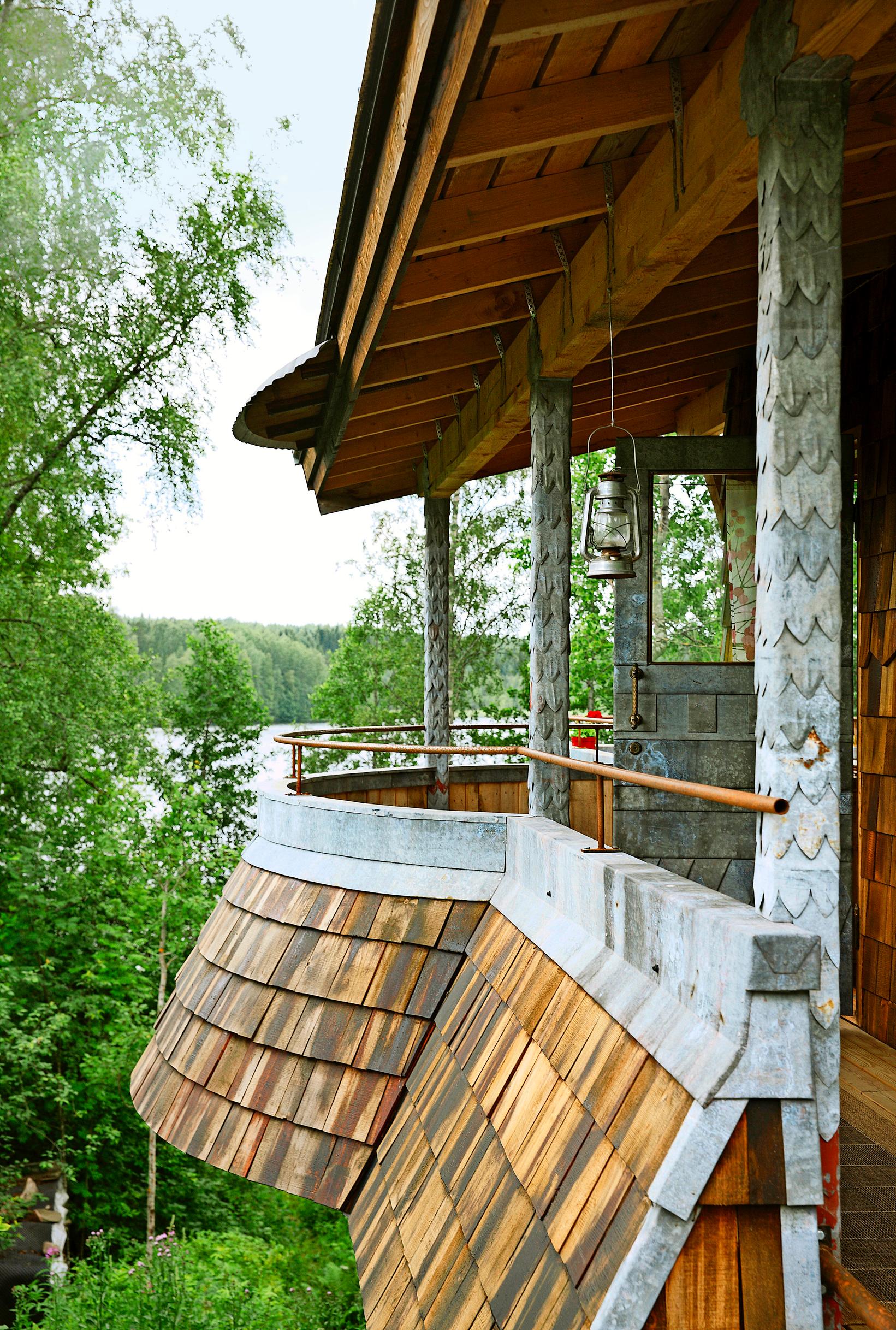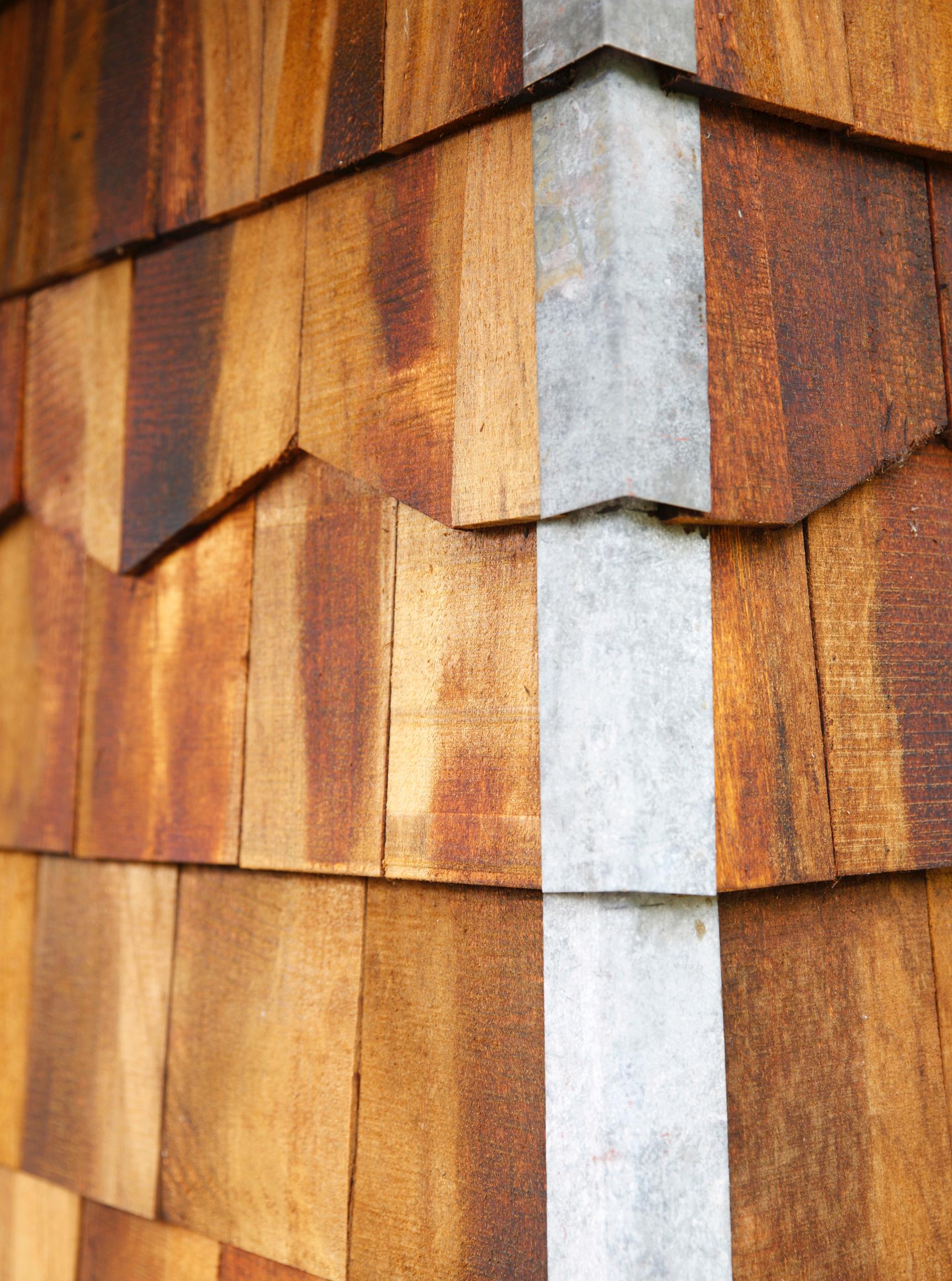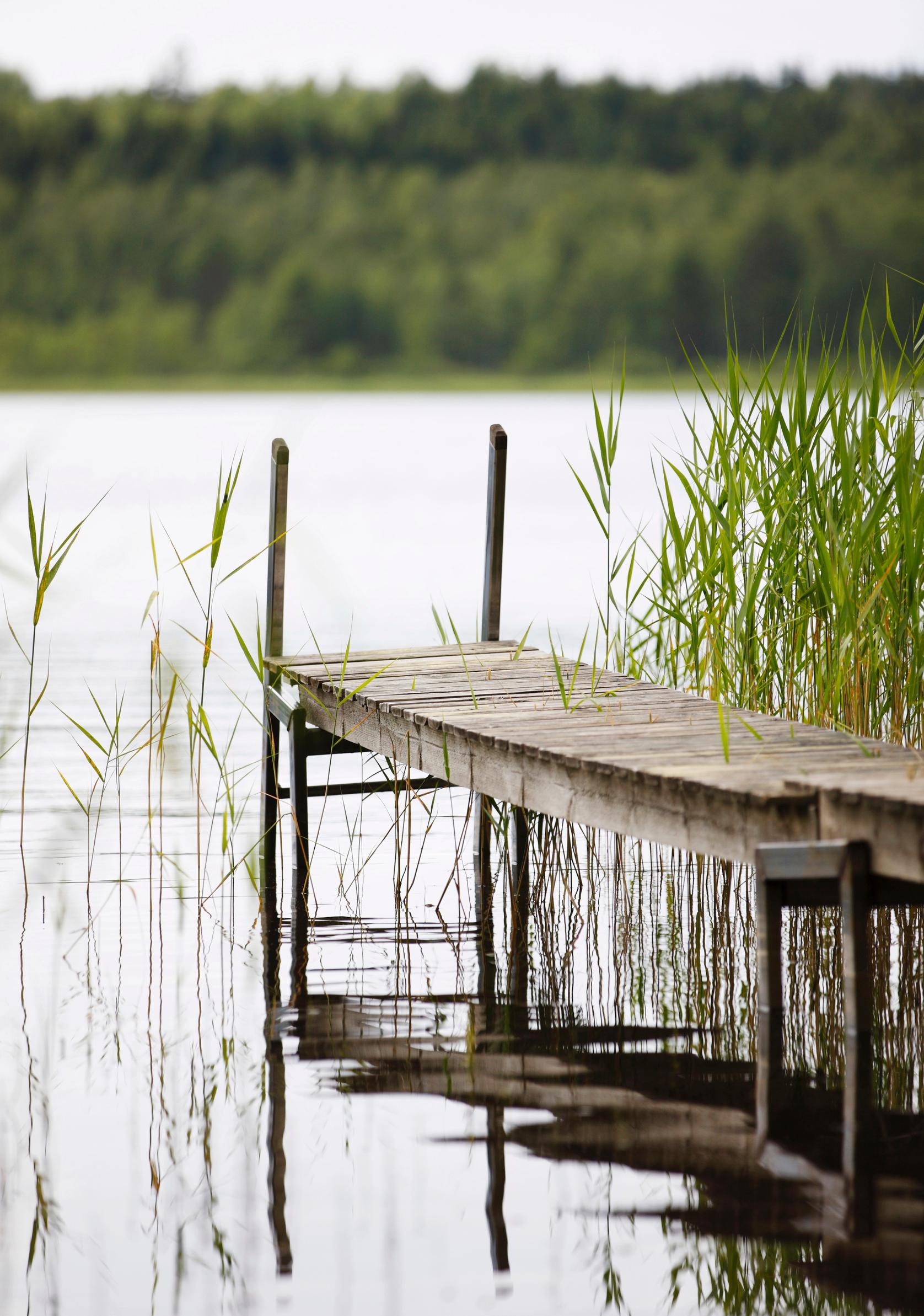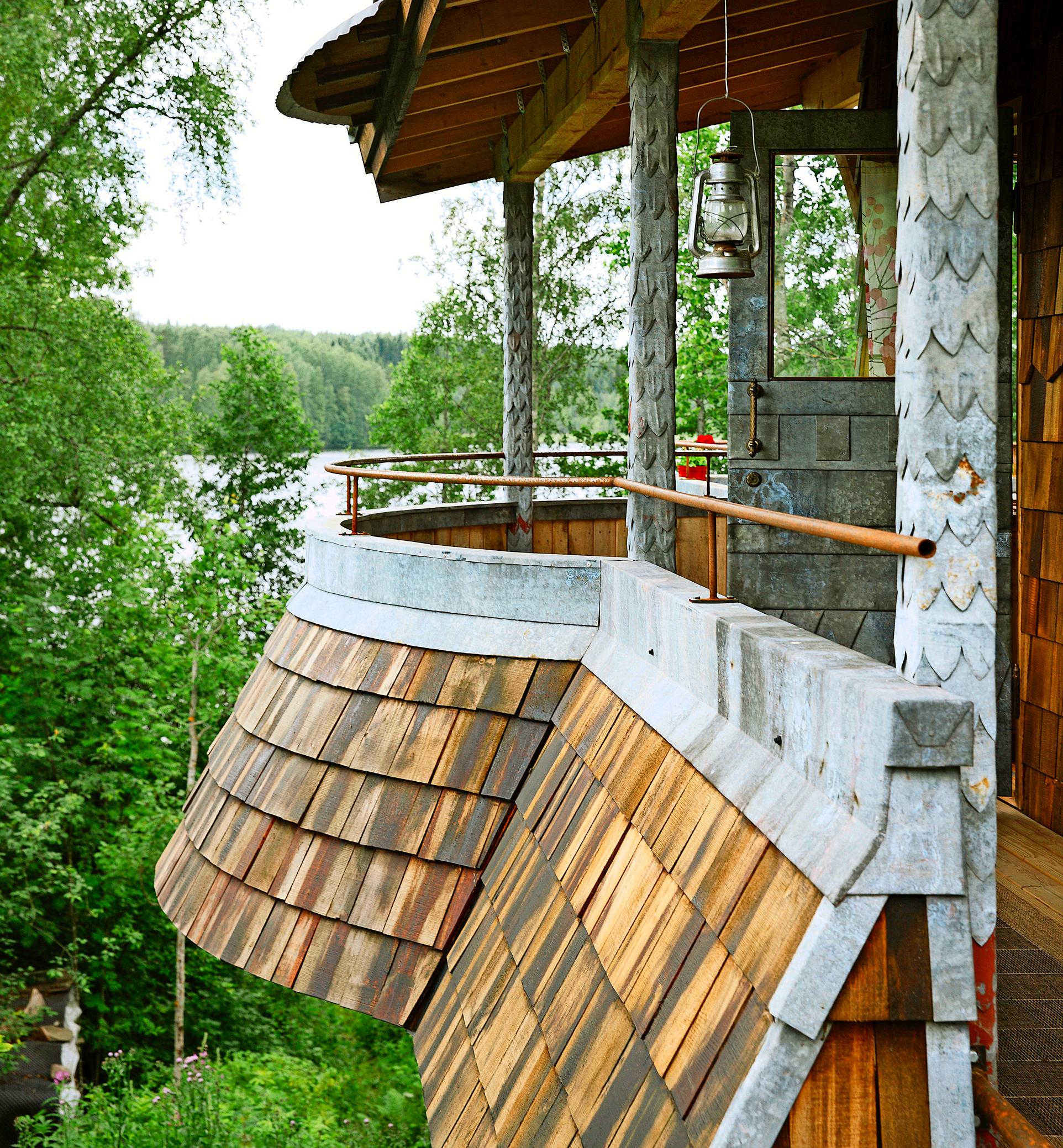
A Gaudí-inspired getaway—“When I design surfaces, I imagine myself as a drop of water”
Matti Ratalahti envisioned his cabin as two shipping containers stacked on top of each other. The entrance is surrounded by a curved terrace, whose undulating shape was inspired by architect Antoni Gaudí.
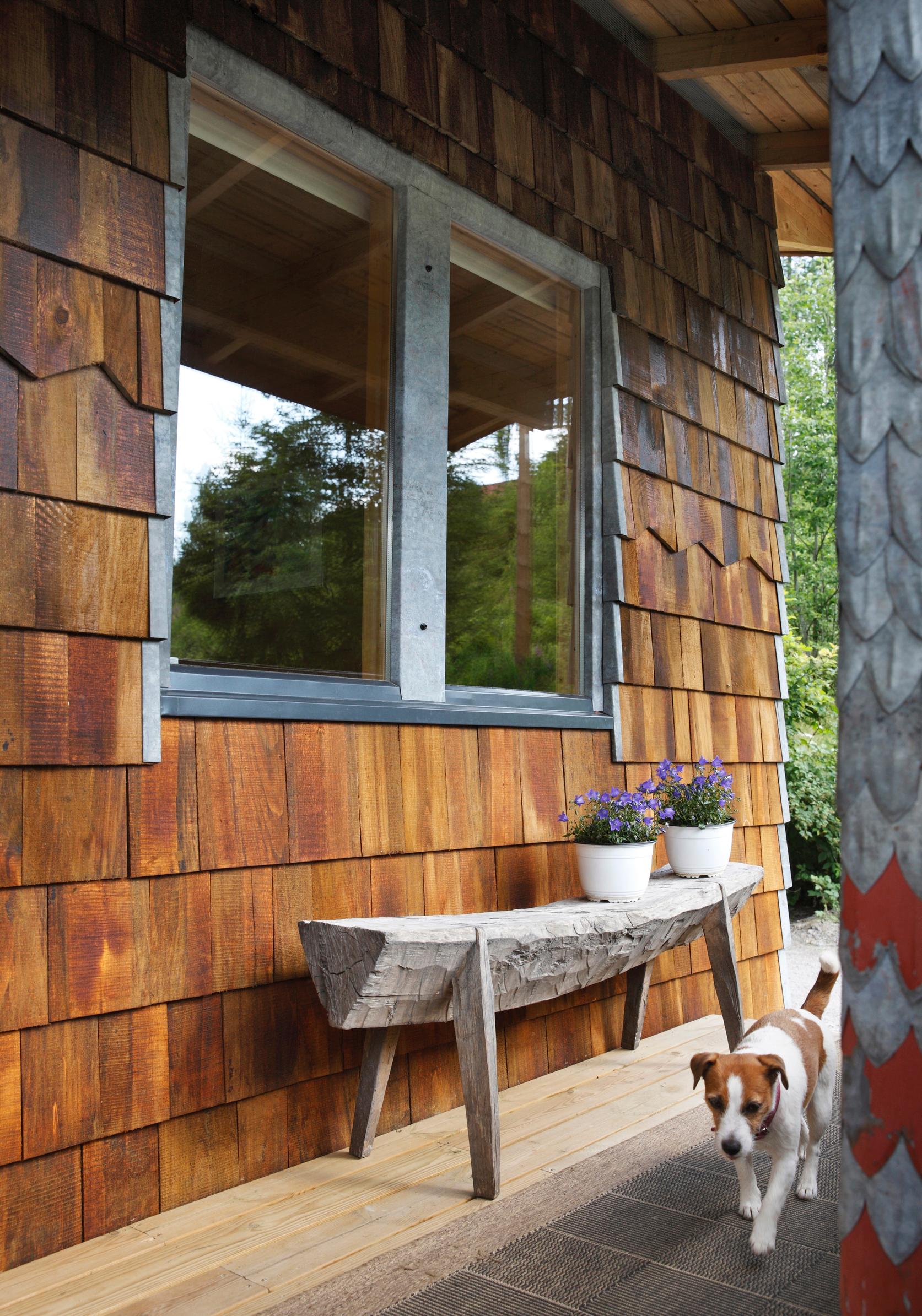
Marjukka and Matti Ratalahti’s getaway is an astonishing mix of ease and serious effort. Ease is reflected in the sloped yard, brimming with horsetail taller than most people, cotton candy-like cow parsley clusters, and lush tufts of grass. A dedicated gardener could spend multiple summers taming it, but the Ratalahtis prefer not to take on that burden.
“I hate it when the lawnmower starts roaring the minute we arrive at the cabin for the weekend,” Matti exclaims.
The couple has a single-family home with a garden about twenty minutes away, and they like living differently at the cabin compared to the city.
Still, they’ve put plenty of effort into this place. The two-story cabin, just 36 square meters, features so many meticulously crafted details that you hardly know where to look at first. Yet the overall impression is subdued and minimalist—there aren’t even any trim boards.
“These days, people add trim upon trim. I prefer a pared-down look. It also saves time.”
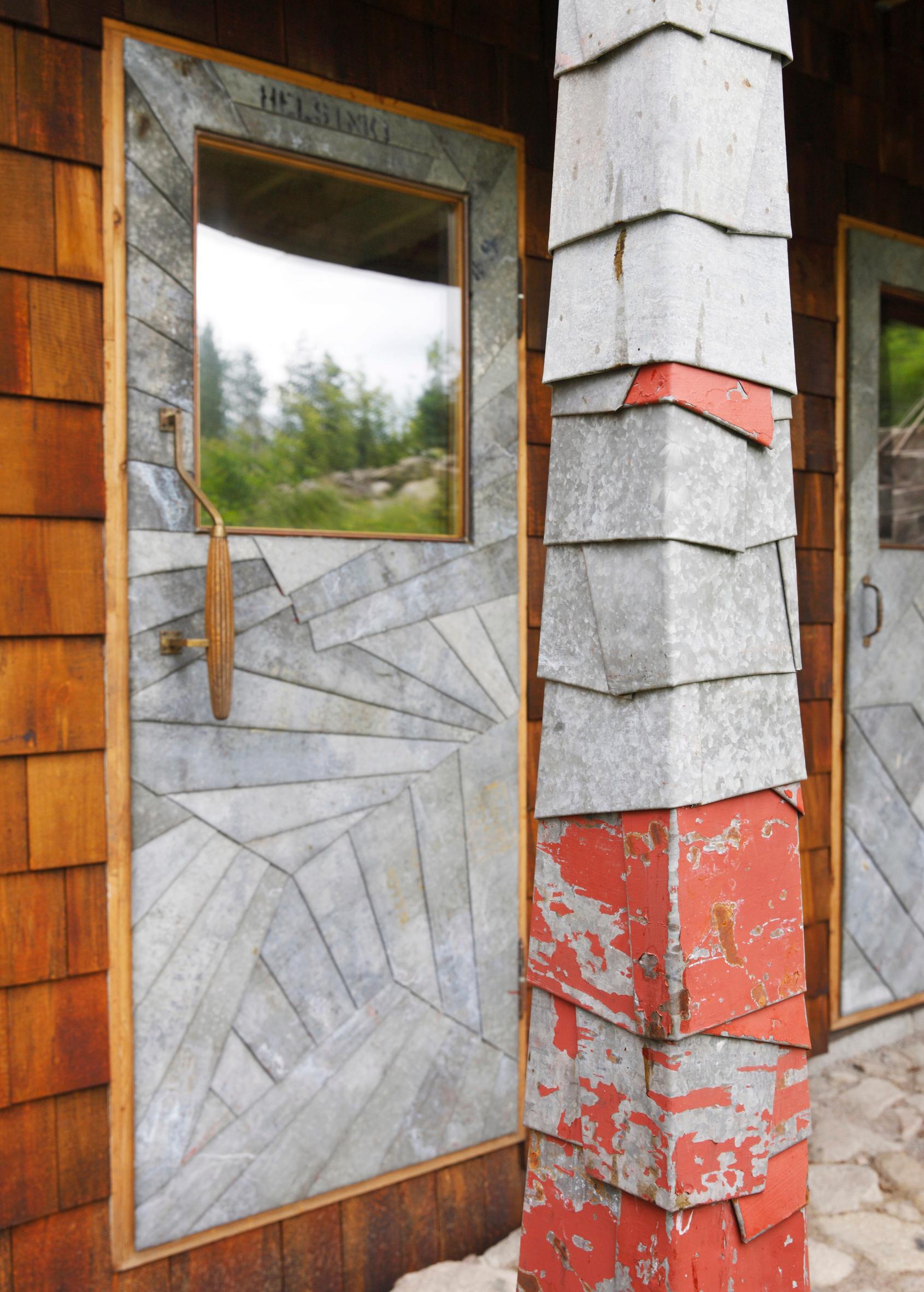
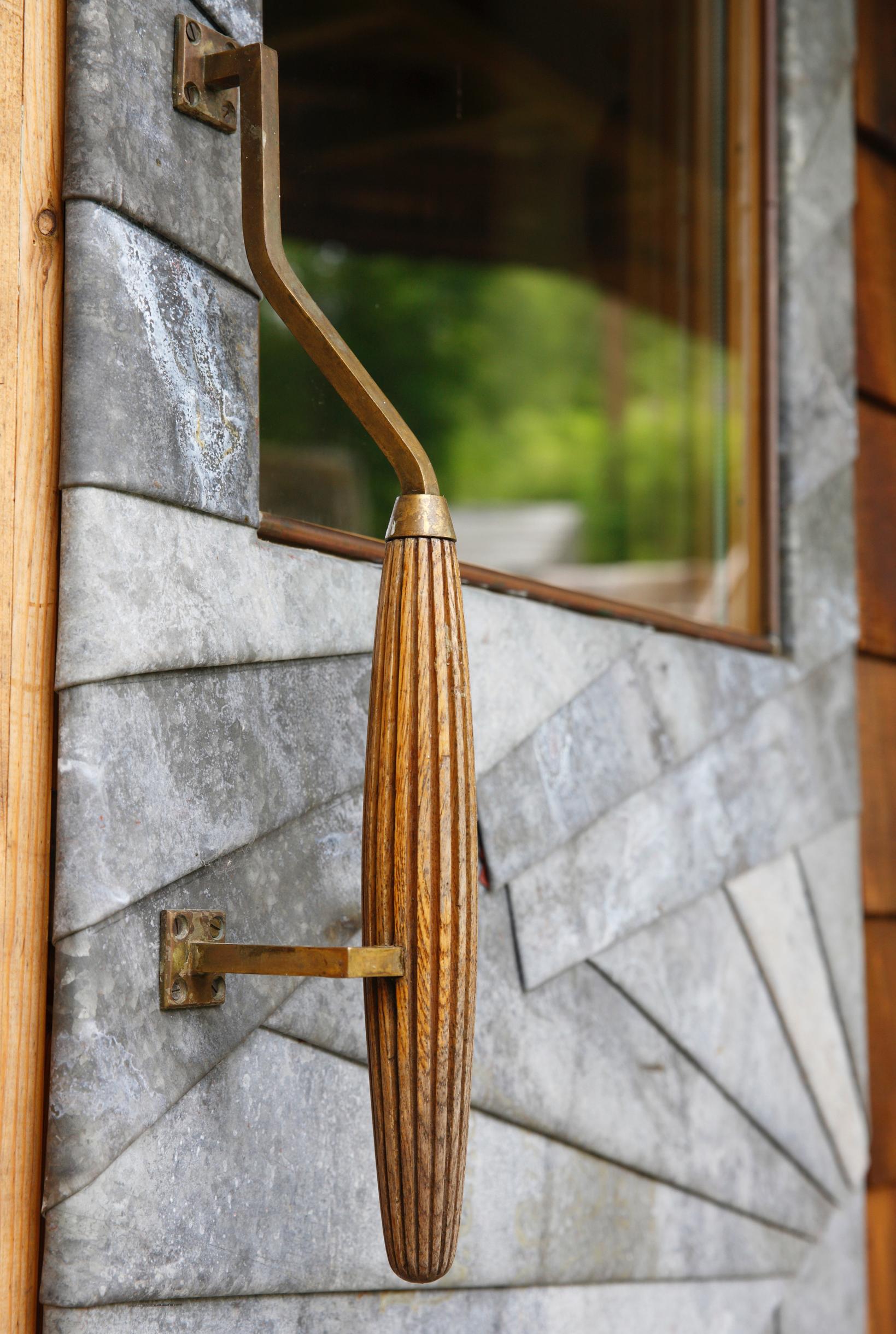
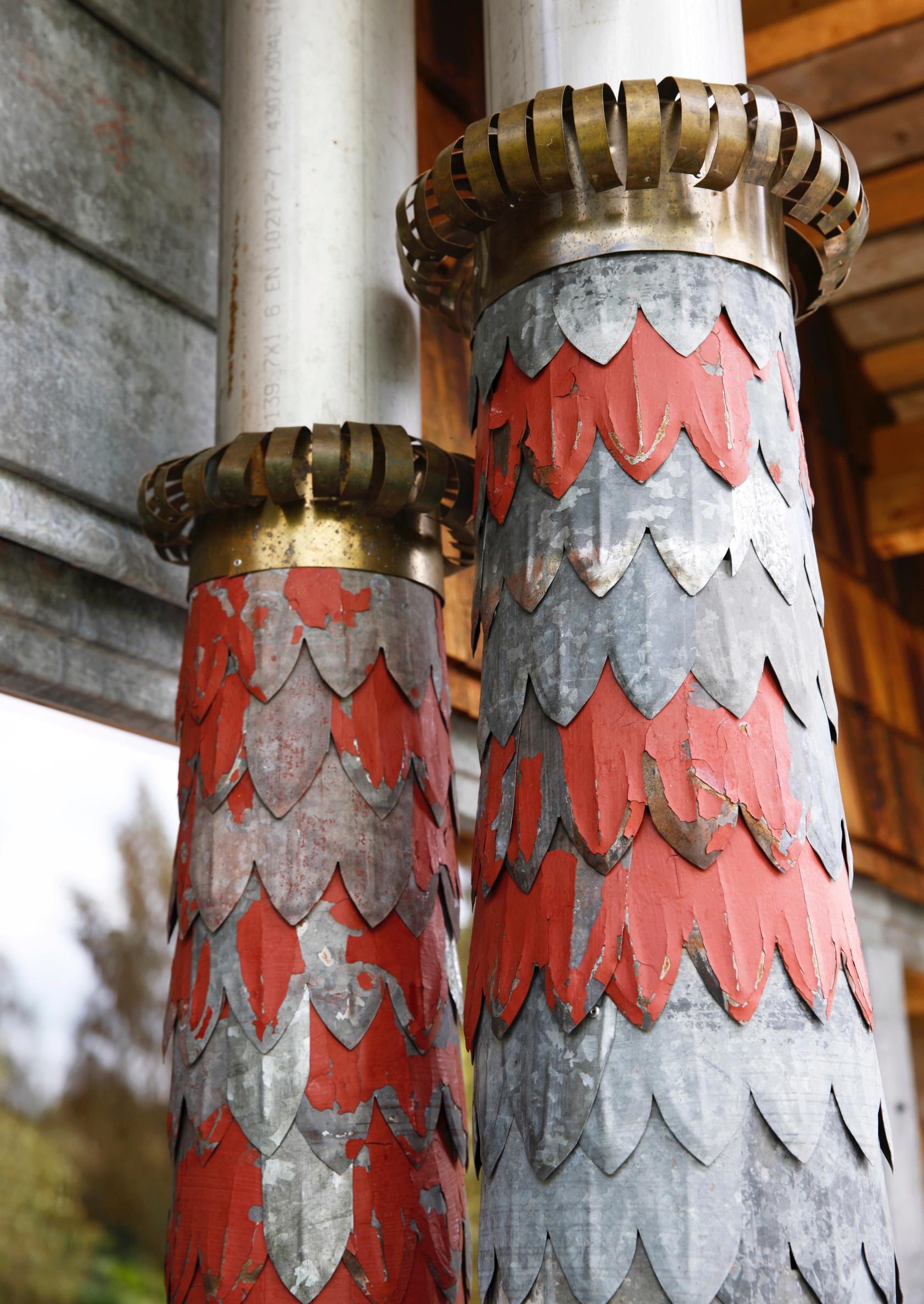
This is clearly no ordinary cabin. Before retiring, Matti was a senior lecturer in design at the Lahti Institute of Design, and he both designed and built this retreat.
He pictured it as two shipping containers stacked on top of each other, featuring a curved, railing-enclosed terrace around the entrance. They only needed an architect to finalize the drawings, who warned them about how labor-intensive the plan would be.
“I said they could leave that to us because there are two carpenters on-site, me and my son-in-law. The curved shape brings sense of energy to the house, and without it, the whole thing would be dull,” Matti explains.
Children, grandchildren, and two sons-in-law—one of whom is also the host’s former student—all pitched in. Marjukka kept the volunteer crew well fed.
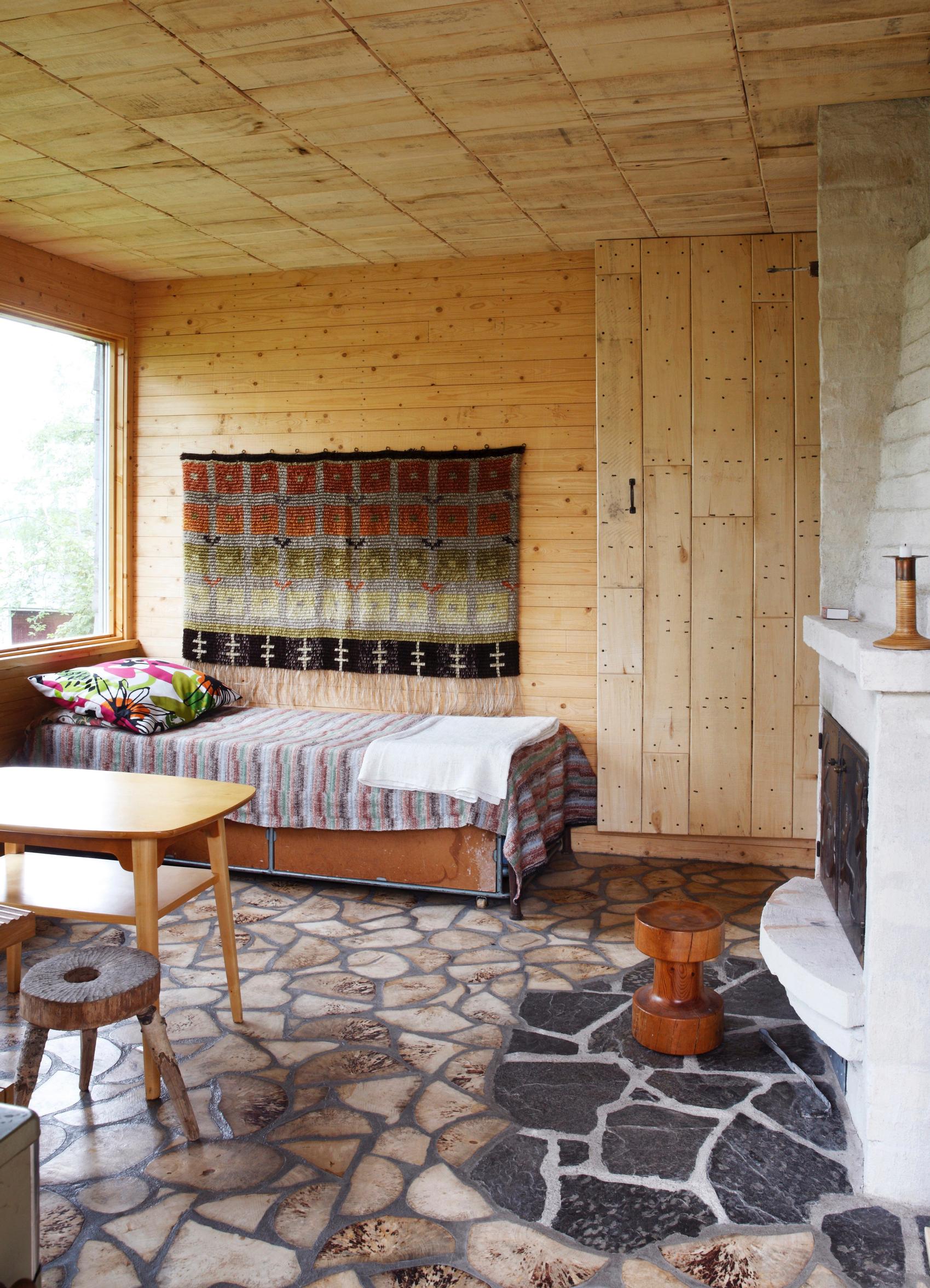
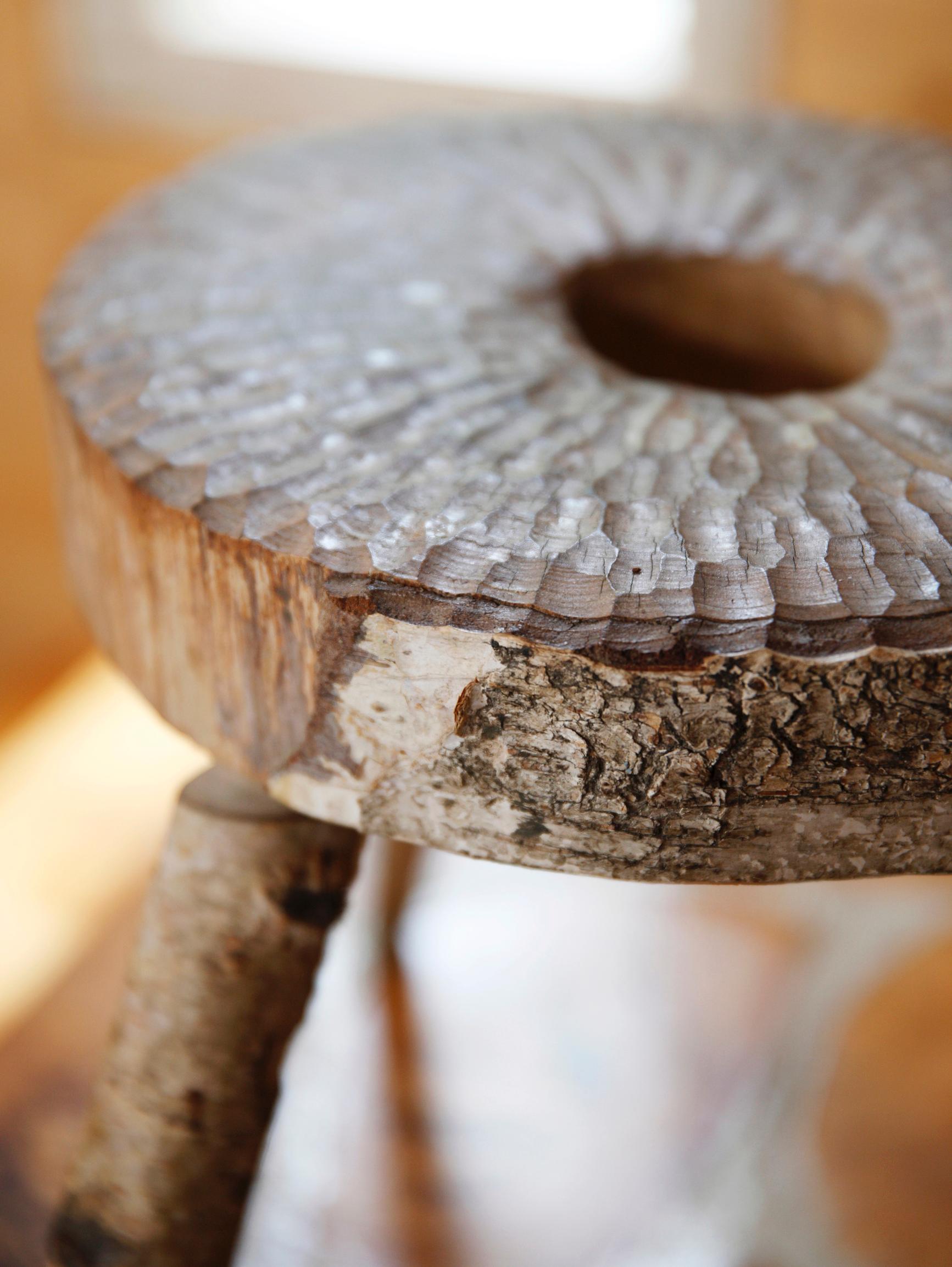
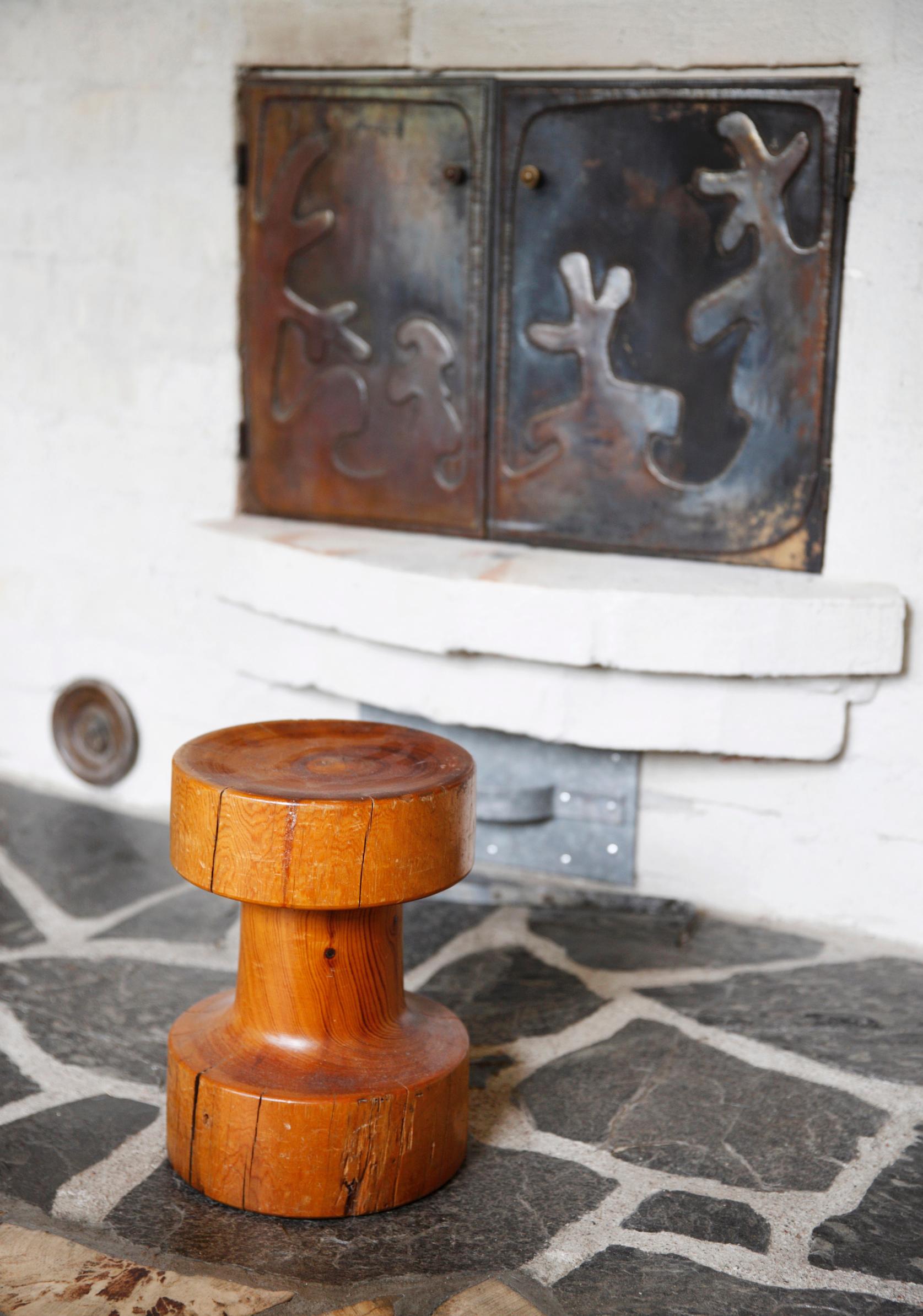
The building is clad with shingle-like boards, each 12 millimeters thick. They were cut from aspens felled in their own yard and treated with burial tar, creating a rich brown hue. Matti got the idea for this cladding during past trips to California, where he observed local architecture.
On the floor is the host’s tribute to the National Museum of Anthropology in Mexico City. It was assembled from pieces of wood attached to a base made of leftover plywood. He used a band saw to cut the pieces from birch logs gathered on the property, which had oxidized outdoors in the rain all summer. Partial rot created patterns in the wood reminiscent of natural cork.
Before gluing, Matti dried the pieces at home in his boiler room “like gingerbread cookies.” After gluing, he varnished them multiple times, grouted them with mortar, and varnished again.
For the cabin’s doors, pillars, chimney flues, and the top of the railing, Matti used pieces of old roofing sheet metal. Each door is different, both decorative and practical.
“When I design surfaces, I imagine myself as a drop of water. The water must flow down along the surface to the ground, not linger in seams or structures.”
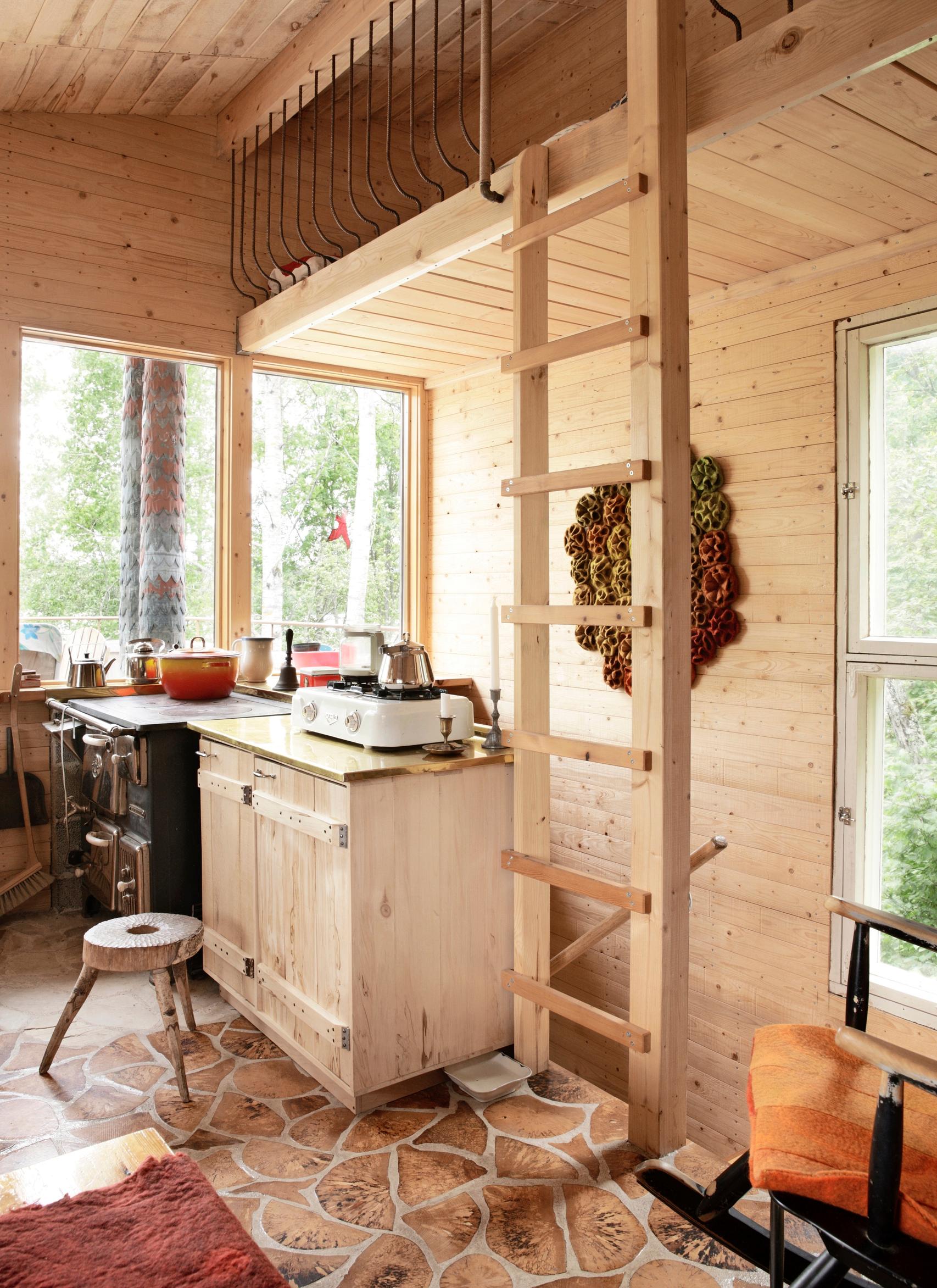
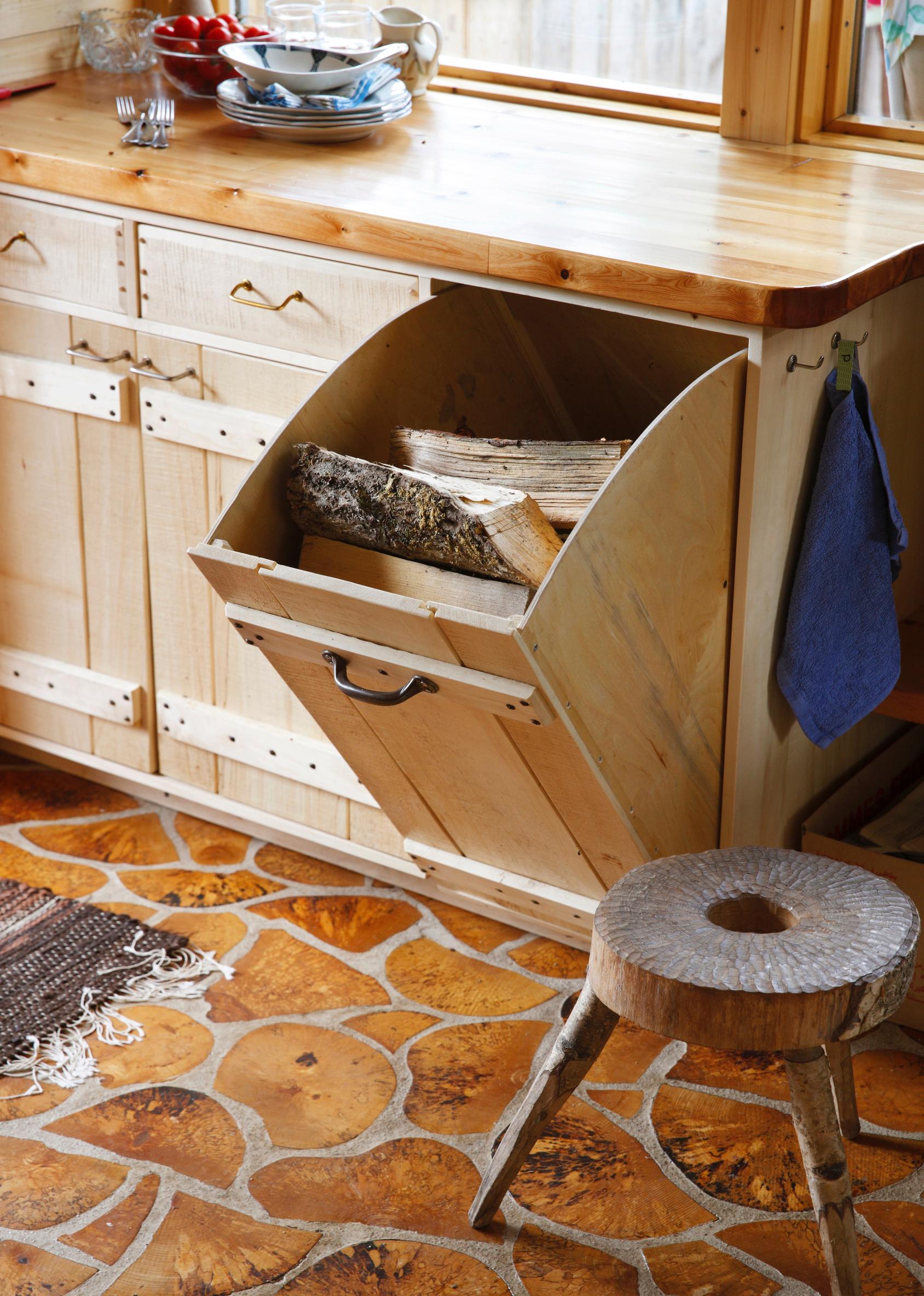
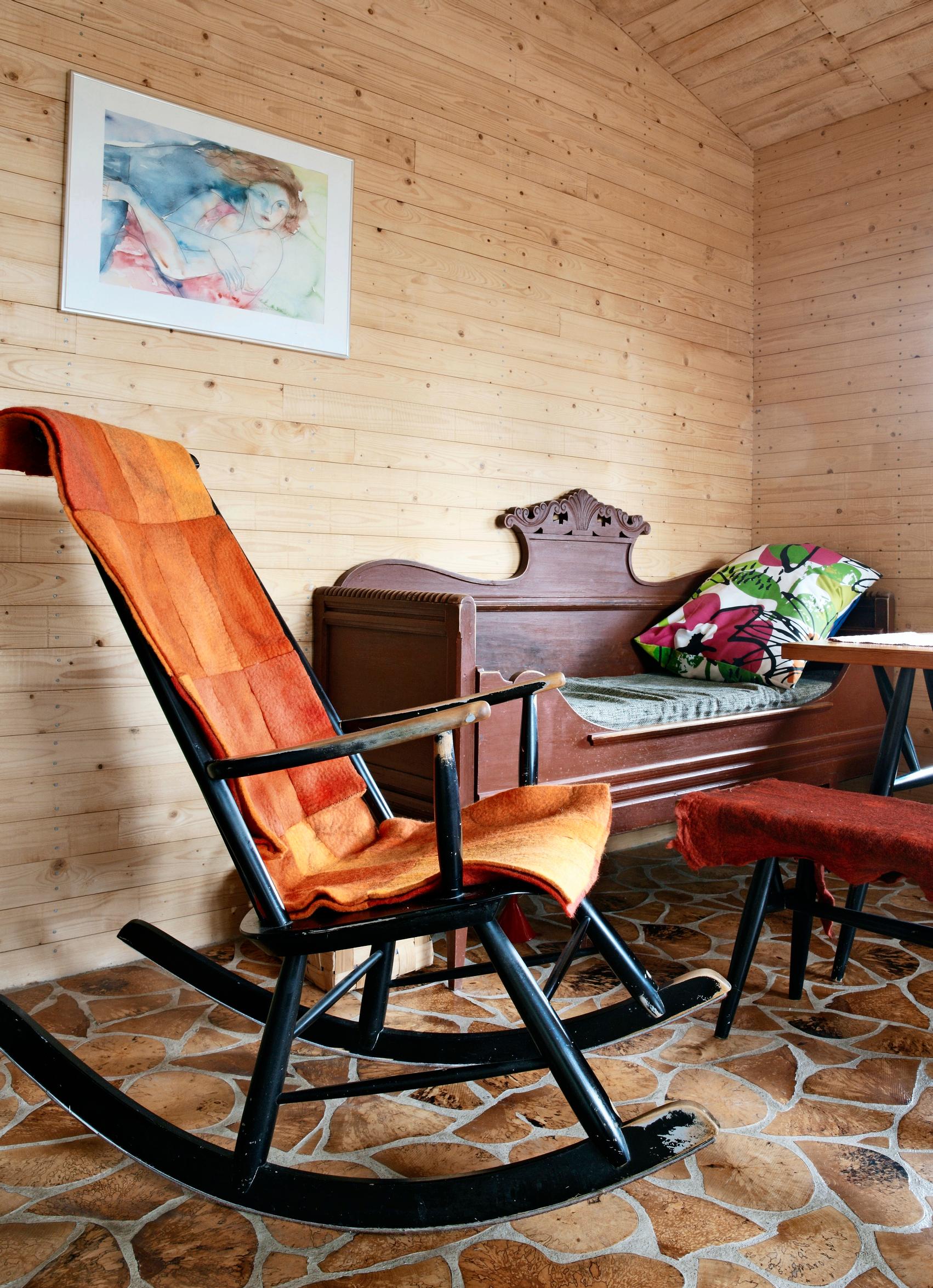
The building was completed on a budget of only 20,000 euros, a quarter of which went toward permits and official fees.
They recycled and gathered everything possible from their own yard and relied on volunteer help to build. Only the roofing metal, tongue-and-groove paneling for the interior, and a few other supplies were bought at a store. Even the building materials were small enough that they didn’t need tractors or winches to move them. Most of the furnishings and furniture were either made by Matti or found at flea markets.
“I always consider sustainability when I design or buy something. The world is full of stuff, and I think we should extend its lifespan. Besides, going to flea markets is a bit like fishing—you never know what you’ll catch,” Matti says with a smile.
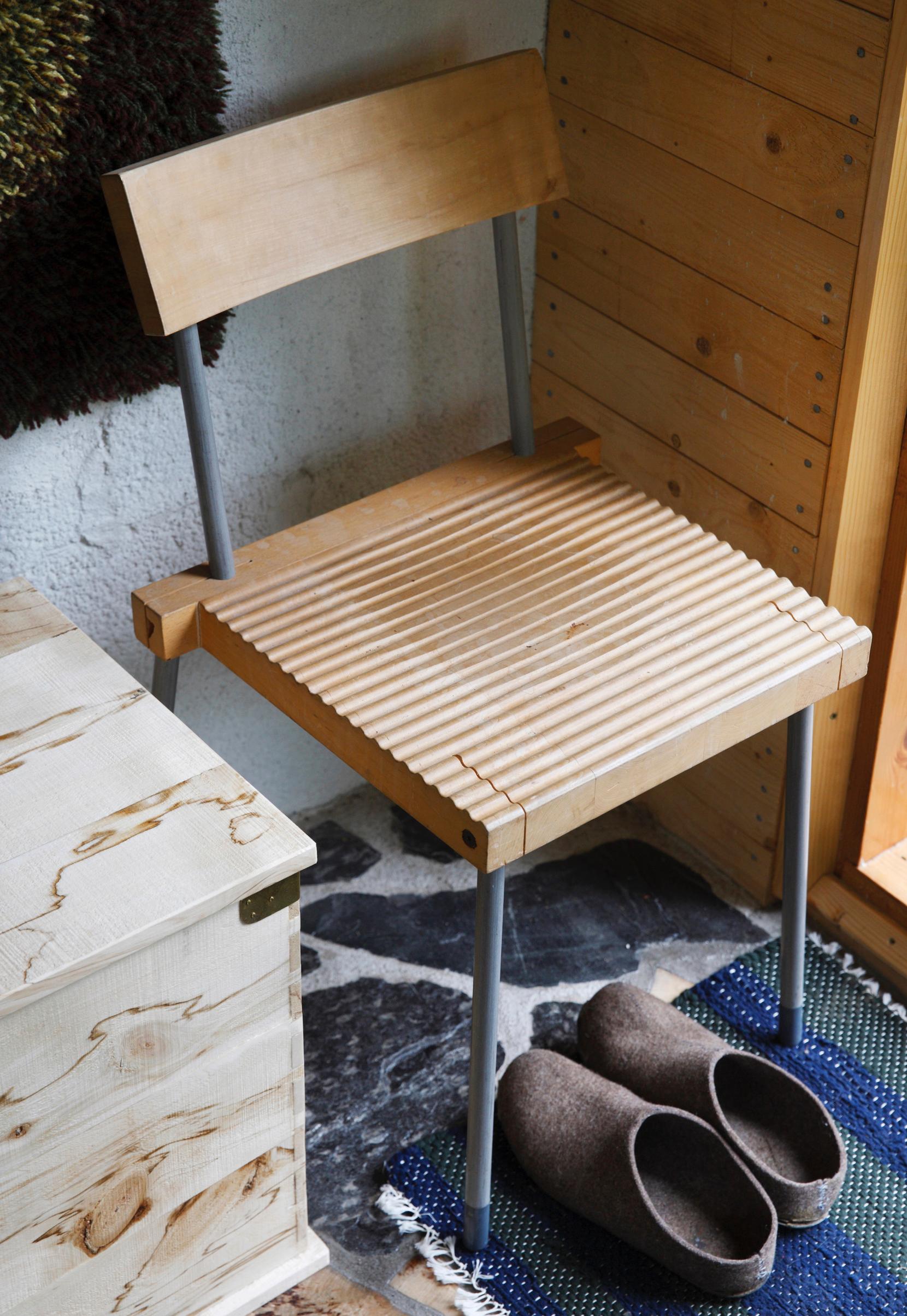

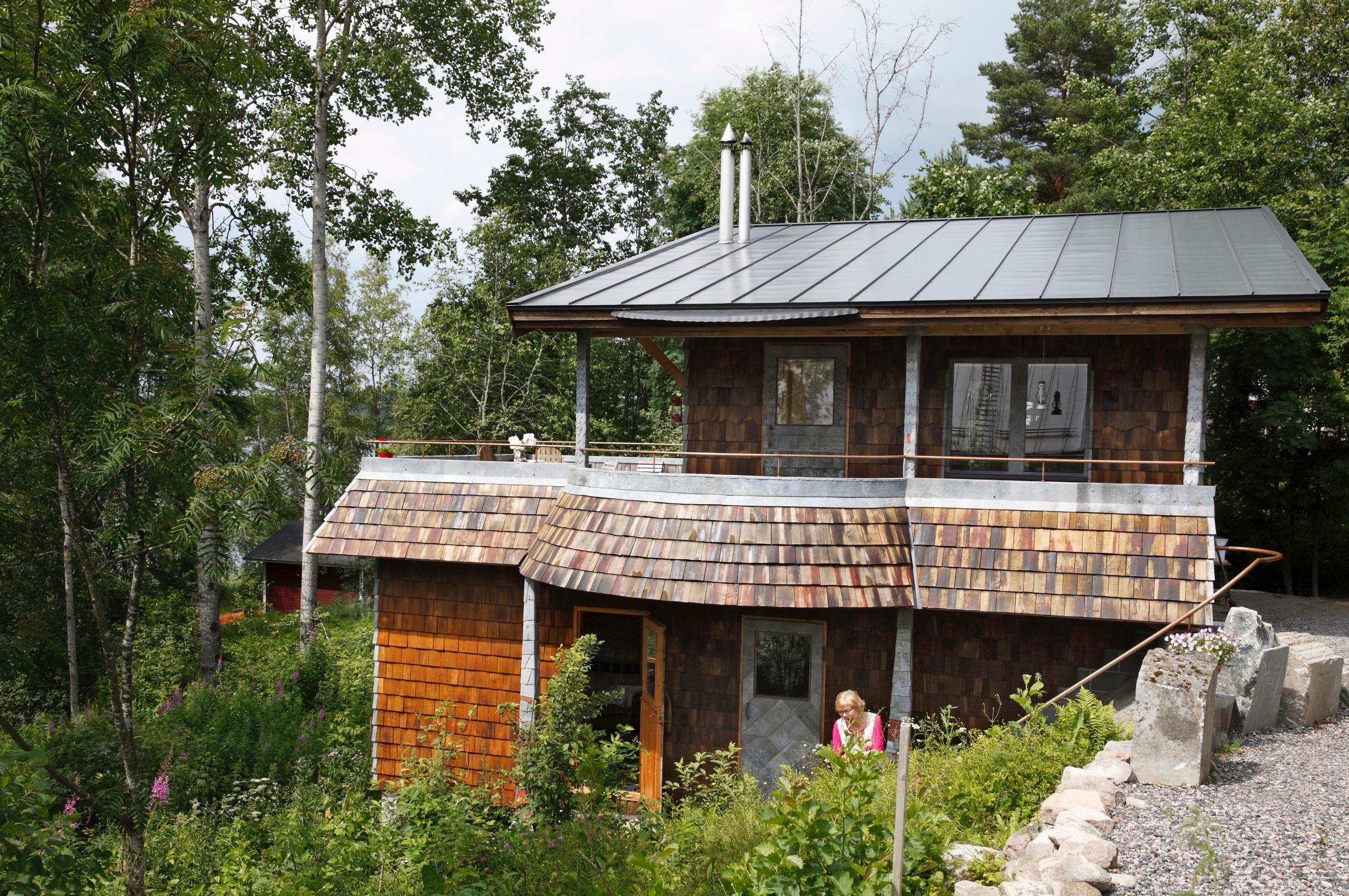
Moreover, these materials don’t need to be painted or scraped every few years. The exterior walls, for instance, stay in good condition with a coating of tar only a couple times per century. Meanwhile, aspen boards on the terrace railing are allowed to weather to a natural gray in the sun and rain. The steel handrail at the top is left to oxidize into a deep, dark brown before it's covered with a thin layer of tar.
Completing the project, paperwork included, took about three years, but Matti doesn’t dwell on how many hours were spent.
“Essentially, I just got a sandbox for myself and my loved ones so we'd have a fun project. It’s enjoyable tinkering, not forced labor.”
Matti encourages other builders to trust their own vision. The obvious option might end up as a watered-down compromise.
